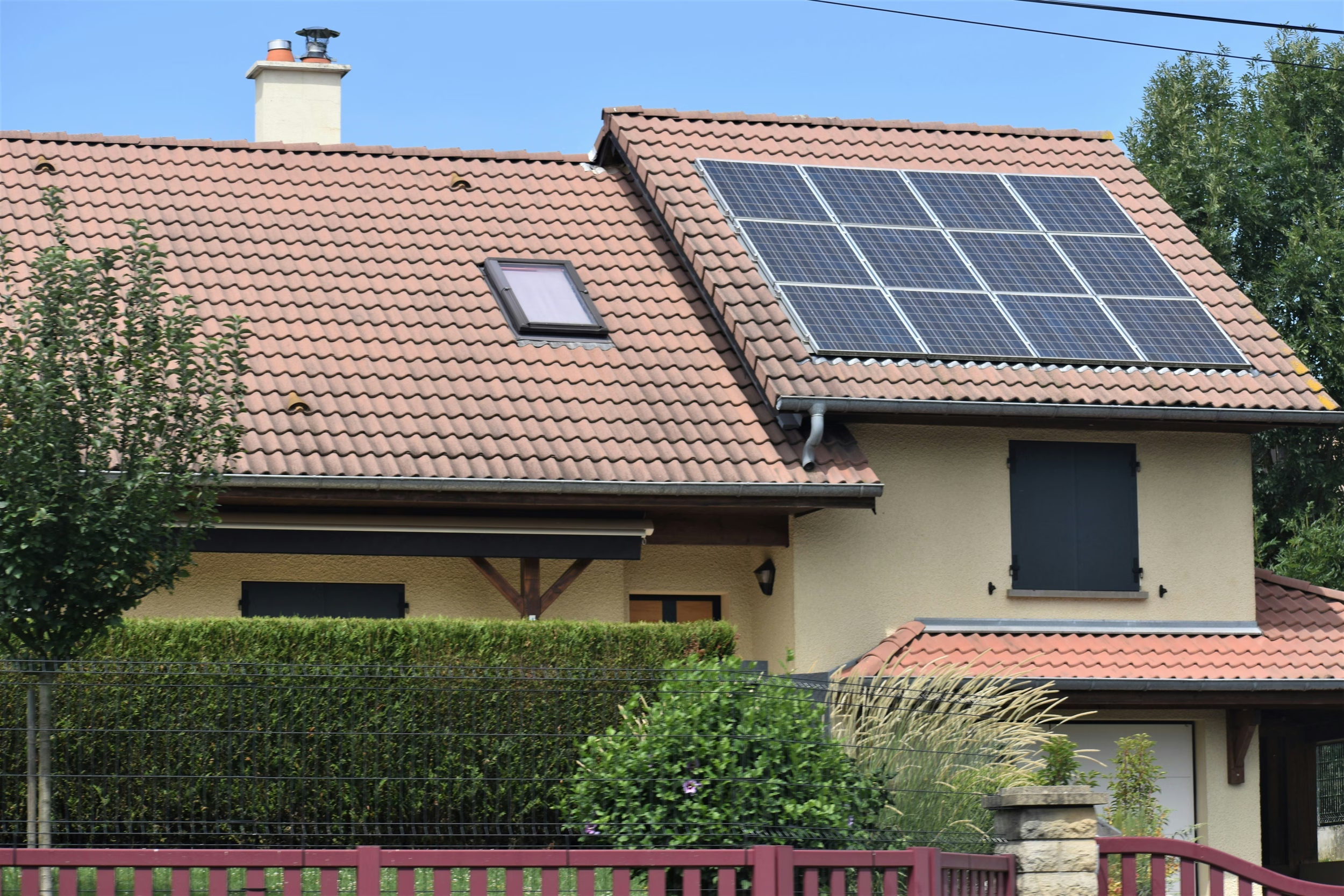
Solar Power Savings for Utah Homeowners Compared to Rocky Mountain Power Customers
In recent years, solar power has emerged as one of the most effective ways for homeowners to cut down on electricity bills and secure stable energy prices over the long term. This is particularly true in Utah, a state known for its abundant sunshine, where homeowners who install solar panels can see significant cost savings compared to relying solely on the utility company, Rocky Mountain Power (RMP). In this blog, we’ll break down the factors that cause utility rates to fluctuate, how those fluctuations impact energy bills for Utahns, and how solar power can help you lock in energy cost stability and save tens of thousands of dollars over time. We’ll also dive into the seasonal factors that affect power usage in Utah and provide a detailed analysis of the potential savings a solar-powered home can expect over 20 years.
Why Power Bills Fluctuate with Rocky Mountain Power
Rocky Mountain Power (RMP), like many other utilities, experiences frequent fluctuations in its pricing due to several variables. Understanding these factors is key to realizing why solar power offers such a consistent alternative for homeowners.
Energy Source Mix
RMP derives its electricity from a mix of energy sources, including coal, natural gas, wind, hydroelectric, and solar power. While this diverse energy portfolio is beneficial for balancing energy demands, it also introduces volatility into electricity prices. Coal and natural gas are still the primary sources of electricity in Utah, and these fossil fuels are subject to market price fluctuations influenced by geopolitical events, supply shortages, or global demand spikes . As these fuel prices rise, so do electricity rates .
In contrast, solar power offers a more stable option. Once the panels are installed, homeowners are no longer reliant on fluctuating fuel costs. Solar energy production is based solely on sunlight, a free and abundant resource.
Transmission and Distribution Costs
Another major factor influencing utility rates is the cost of maintaining and expanding the electricity grid. Transmission lines, transformers, and substations must be maintained, repaired, and upgraded to meet growing demand. These costs are typically passed on to consumers through increased electricity rates . Additionally, Utah’s varied geography—ranging from densely populated urban centers to rural areas—requires extensive transmission infrastructure, increasing the cost of delivering electricity to remote locations.
Solar power eliminates this dependency on transmission infrastructure since the energy is generated on-site at your home.
Demand Changes and Time-of-Use Pricing
Electricity prices can also fluctuate depending on the time of year and the time of day, driven by changes in demand. During Utah’s hot summers, energy consumption spikes as residents rely on air conditioning to cool their homes. Likewise, energy demand rises during the winter as heating systems work harder. To manage this demand, RMP often implements time-of-use pricing, where electricity rates are higher during peak hours (typically late afternoons and early evenings) and lower during off-peak hours . These variable rates can lead to unpredictable energy bills, especially during high-demand seasons.
By contrast, a solar power system generates energy consistently during daylight hours, allowing homeowners to significantly offset or eliminate peak-hour electricity charges. Many Utah residents also take advantage of net metering, a program that allows solar energy producers to sell excess energy back to the grid at the retail rate, further reducing their utility bills .
Seasonal Impacts
Utah experiences wide seasonal variations, with extremely hot summers and cold winters. As a result, energy consumption fluctuates throughout the year. According to data from the U.S. Energy Information Administration (EIA), the average household in Utah consumes approximately 750 to 900 kWh per month, with energy usage peaking in July and December . This seasonal variability can result in dramatic differences in monthly energy bills.
For Rocky Mountain Power customers, this means higher bills in both the summer and winter, with the potential for significant swings between the seasons. By contrast, solar-powered homes benefit from high summer energy production, when the sun is most intense, helping to offset the increased electricity demand from air conditioning.
Cost of Electricity from Rocky Mountain Power
Let’s look at the average cost of electricity for RMP customers. According to RMP’s data, the current residential rate is approximately 10.57 cents per kWh , although this can vary based on time of use and region. The average Utah household, consuming around 800 kWh per month, would pay approximately $85 to $100 monthly on electricity bills before any seasonal adjustments .
However, this cost can rise significantly during peak demand periods. For example, during the summer, air conditioning can drive monthly energy consumption up to 1,500 kWh or more, leading to bills that can exceed $150 per month . On average, RMP customers spend approximately $1,200–$1,500 per year on electricity, a figure that is expected to increase as energy costs rise .
The Potential Cost-Savings with Solar Power
Now, let’s break down the potential cost savings of solar power. The average cost of installing a 6 kW solar panel system for a single-family home in Utah is around $15,000 to $20,000 before any incentives . Fortunately, federal and state programs help reduce this upfront cost.
Federal Tax Incentives
The federal Investment Tax Credit (ITC) currently allows homeowners to deduct 30% of the total system cost from their federal taxes . This can reduce the cost of a $15,000 solar panel system by $4,500, bringing the net cost down to $10,500.
Break-Even Period
With the cost savings from solar, most homeowners will break even on their solar investment within 8 to 12 years . After this point, homeowners effectively enjoy free electricity for the remaining life of the system, which typically lasts 25 to 30 years.
Annual Savings
The annual savings for solar-powered homes vary based on system size, energy consumption, and local energy rates. On average, Utah homeowners save between $1,200 and $1,500 per year after switching to solar . As RMP’s rates rise over time, the savings increase.
Table: Estimated Cost-Savings for Solar Power Over 20 Years
| Year | Annual Energy Cost (Rocky Mountain Power) | Annual Energy Cost (Solar-Powered Home) | Annual Savings | Cumulative Savings |
|---|---|---|---|---|
| 1 | $1,500 | $200 (maintenance) | $1,300 | $1,300 |
| 2 | $1,575 (5% rate increase) | $200 | $1,375 | $2,675 |
| 3 | $1,653 | $200 | $1,453 | $4,128 |
| 4 | $1,735 | $200 | $1,535 | $5,663 |
| 5 | $1,822 | $200 | $1,622 | $7,285 |
| 10 | $2,326 | $200 | $2,126 | $16,350 |
| 15 | $2,968 | $200 | $2,768 | $30,850 |
| 20 | $3,785 | $200 | $3,585 | $47,655 |
The table assumes a conservative 5% annual increase in Rocky Mountain Power rates, which is typical as energy costs tend to rise over time due to inflation, increased demand, and policy changes . For solar-powered homes, we’ve estimated annual maintenance costs at $200 for tasks like panel cleaning and occasional system checks.
Long-Term Savings
Over a 20-year period, a solar-powered home could save nearly $47,000 in electricity costs, compared to a household reliant on Rocky Mountain Power. With the initial cost of the system factored in, the total savings would still exceed $30,000. Additionally, the system’s life expectancy extends well beyond 20 years, meaning the savings would continue to grow.
Political Influence on Power Costs
Politicians at the federal, state, and local levels play a significant role in influencing electricity costs through legislation, regulation, and policy decisions. Here’s how their actions can impact power prices:
Federal Level
At the federal level, energy policies such as subsidies for fossil fuels, incentives for renewable energy, and regulations on carbon emissions can affect the cost of electricity. For example, the Investment Tax Credit (ITC) for solar panels is a federal initiative that encourages the adoption of renewable energy by lowering the upfront costs of solar systems . Additionally, federal regulations on emissions from coal and natural gas plants can drive up electricity rates if utilities must invest in cleaner, more expensive technologies to comply .
State Level
At the state level, Utah’s Public Service Commission oversees the rates that Rocky Mountain Power can charge its customers. Any rate increases must be approved by the commission, and the state government can influence this process through energy policy and regulations .
Local Level
Local governments also have a role to play in determining electricity costs, particularly through building codes and zoning laws. For instance, local governments may incentivize or mandate energy efficiency measures, like solar-ready building codes, which can reduce long-term energy consumption and costs for residents .
By promoting policies that favor renewable energy and more efficient energy systems, politicians at all levels of government can help mitigate future electricity cost increases. However, decisions that delay the transition to cleaner energy or that continue subsidizing fossil fuels may result in continued rate volatility for utility customers.
For Utah homeowners, switching to solar power presents a substantial opportunity to reduce energy costs and achieve long-term savings compared to reliance on Rocky Mountain Power. The stability of solar energy rates, coupled with various tax incentives and financing options, makes solar a sound investment. Although political factors can influence electricity prices, adopting solar energy helps insulate homeowners from the price volatility of fossil fuel-based energy sources. By making the switch now, homeowners can lock in savings and contribute to a cleaner, more sustainable energy future.
Sources:
- U.S. Energy Information Administration (EIA), Utah State Profile: https://www.eia.gov/state/?sid=UT
- Rocky Mountain Power, Electric Service Schedules: https://www.rockymountainpower.net/about/rates-tariffs.html
- Solar Energy Industries Association (SEIA), Solar Investment Tax Credit (ITC): https://www.seia.org/initiatives/solar-investment-tax-credit-itc
- Utah Office of Energy Development, Utah Solar Tax Credit: https://energy.utah.gov/solar/
- Utah Public Service Commission: https://psc.utah.gov/
- U.S. Department of Energy, Net Metering Policy: https://www.energy.gov/savings/net-metering



